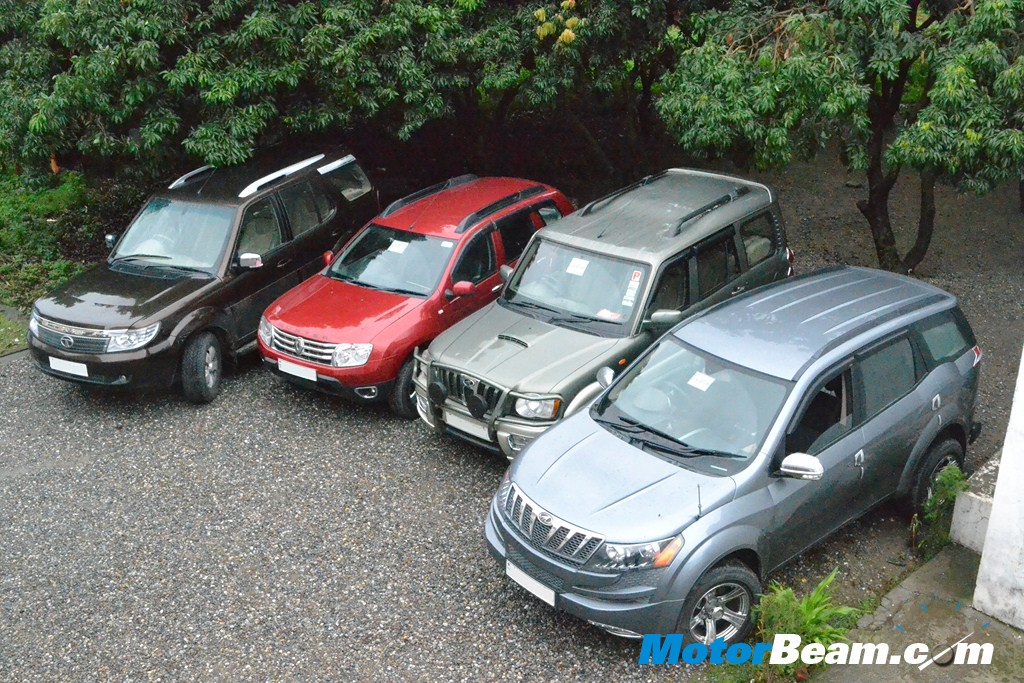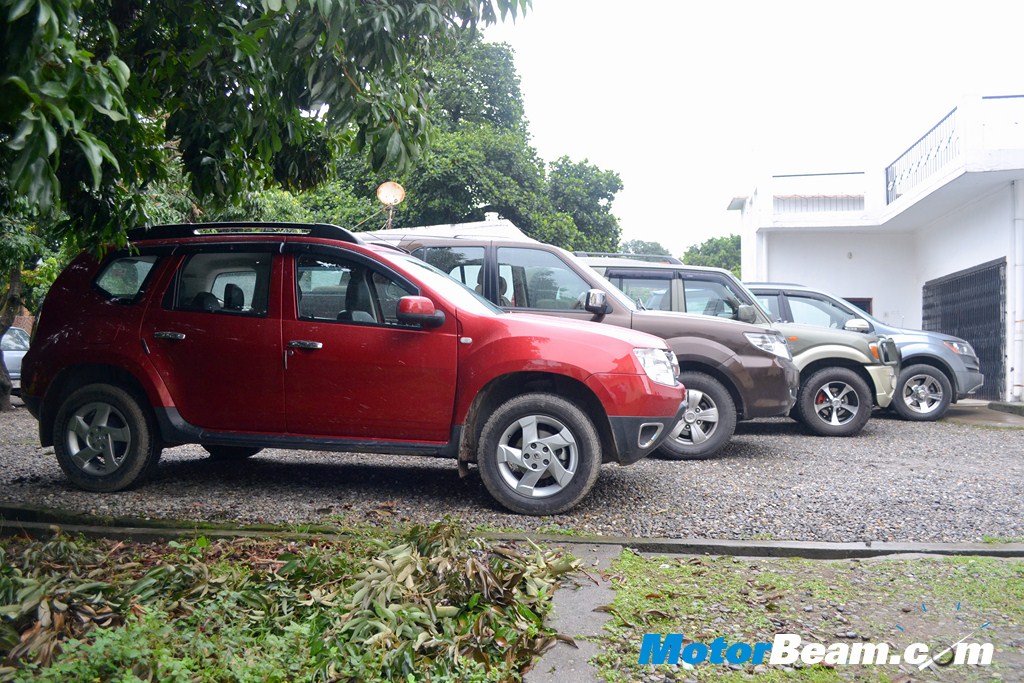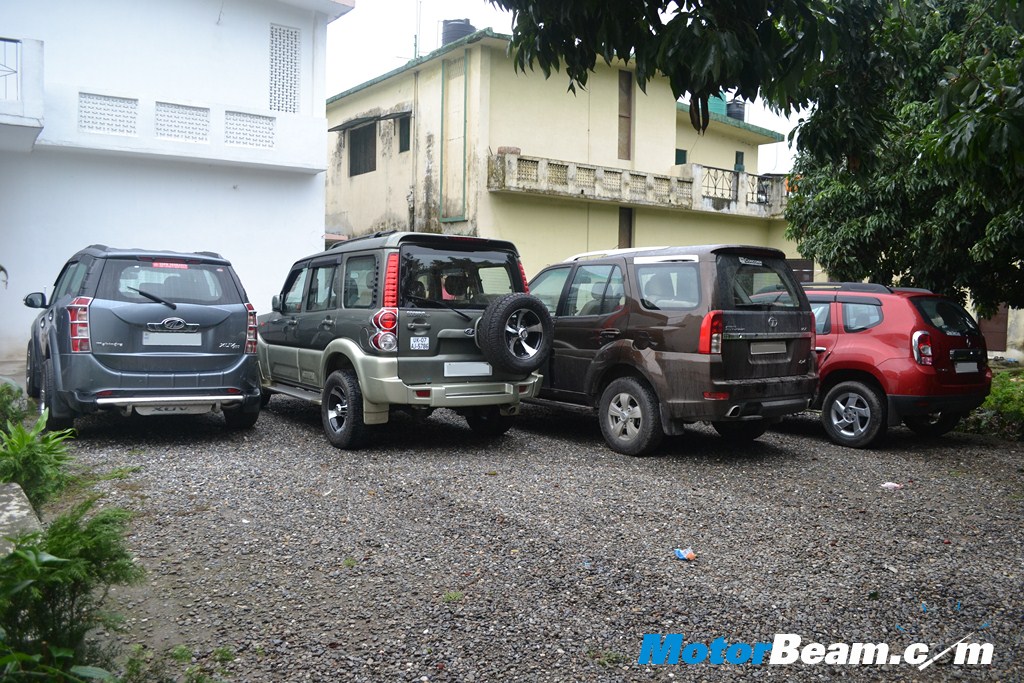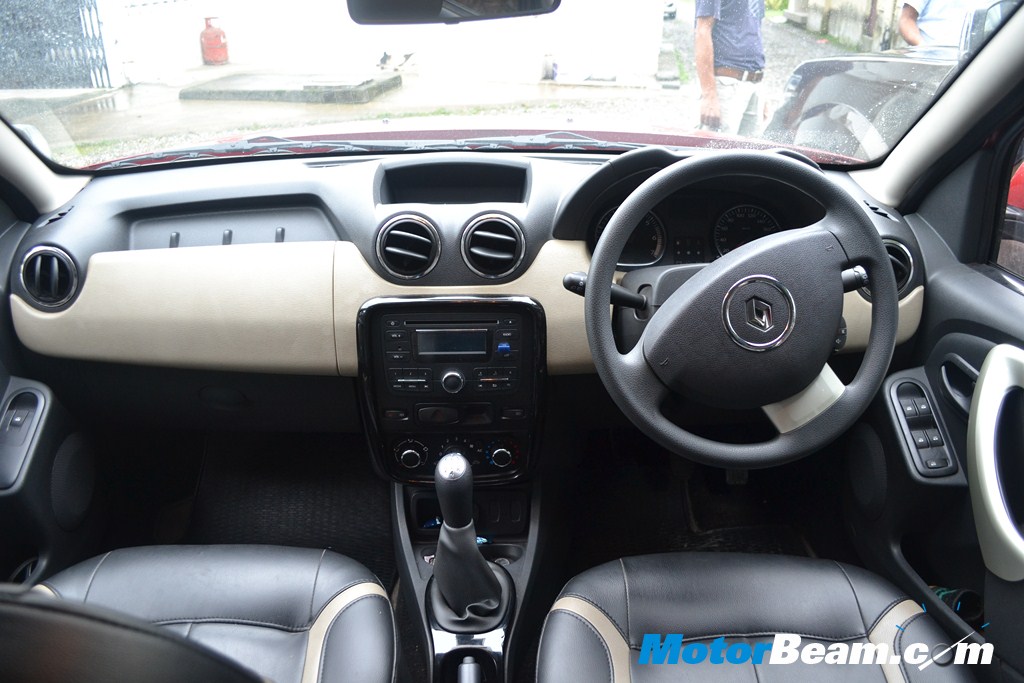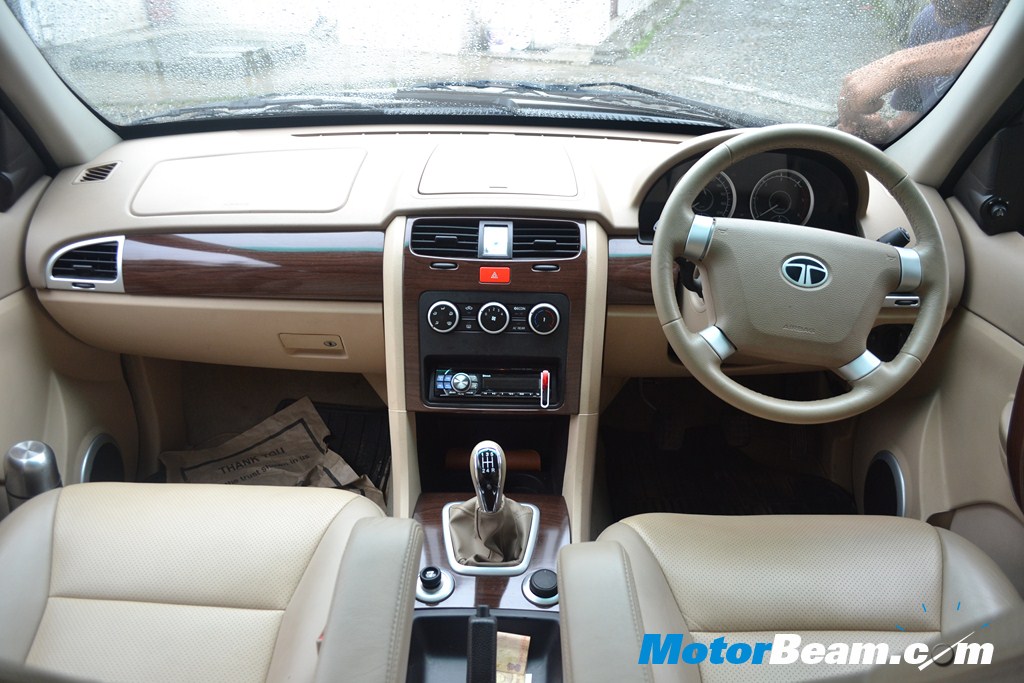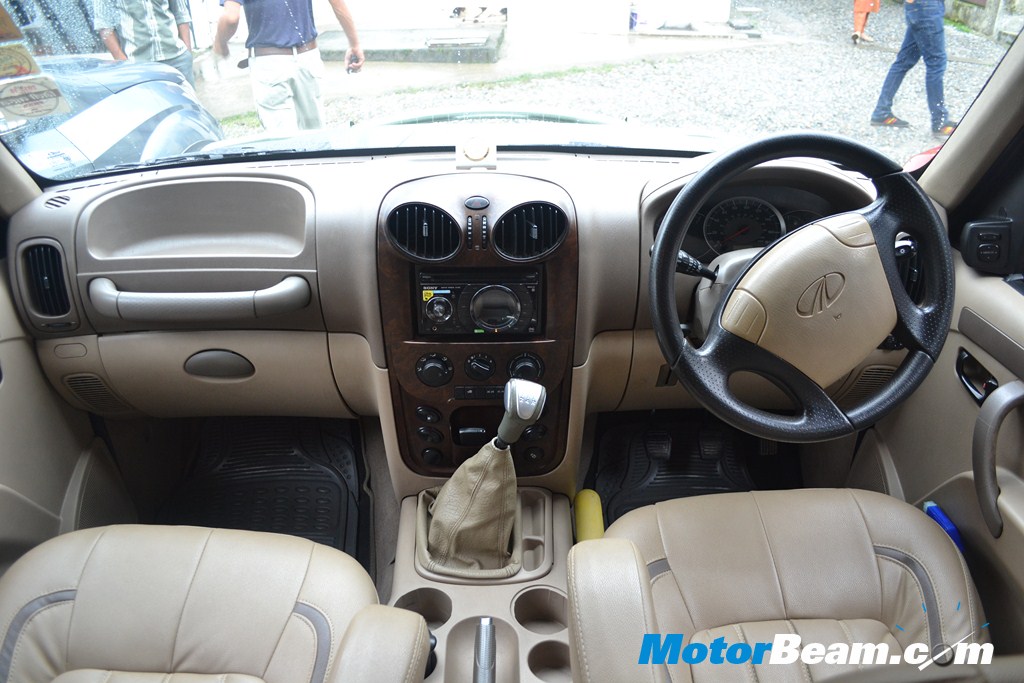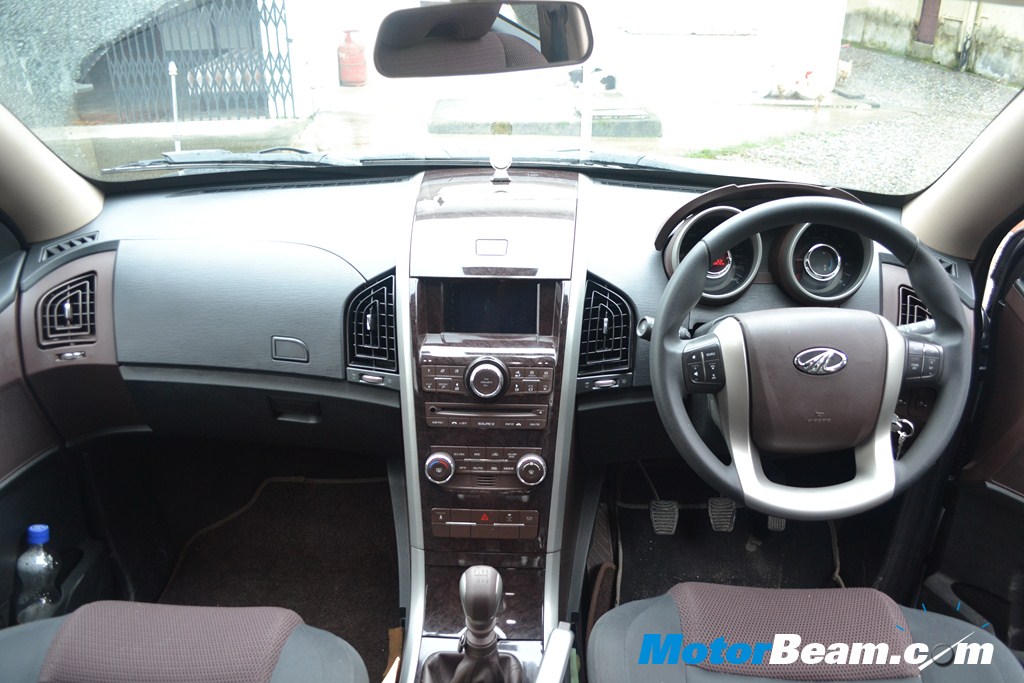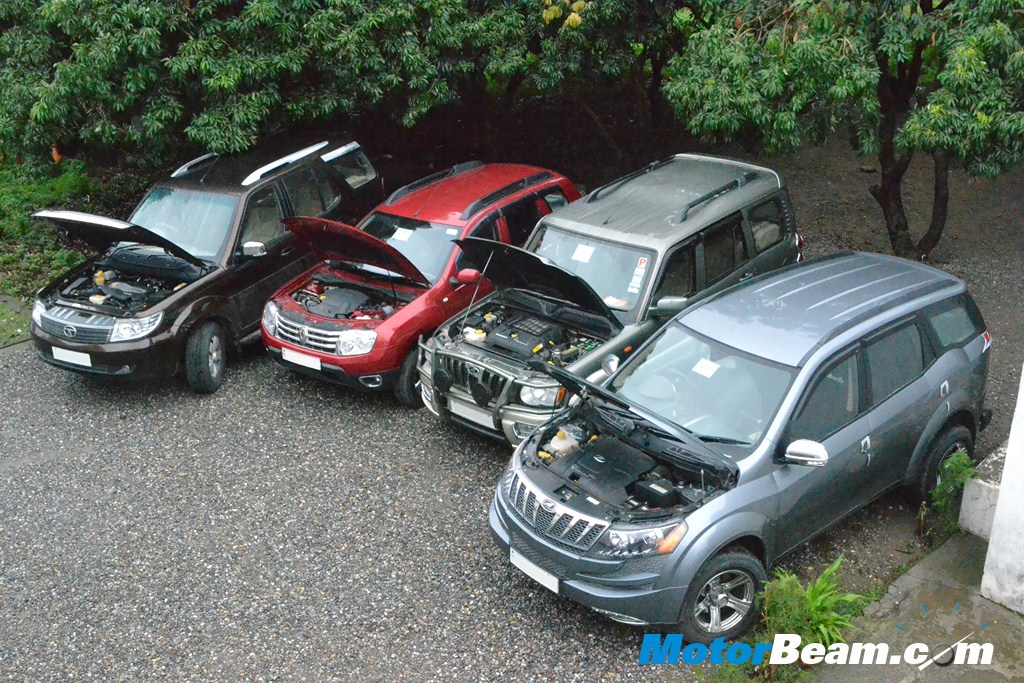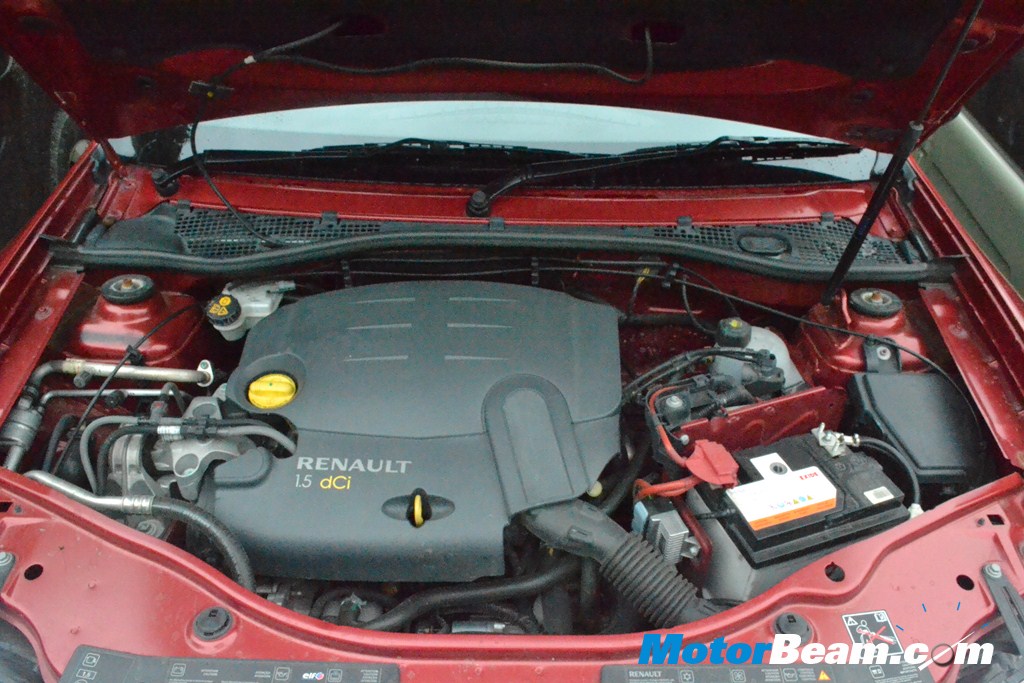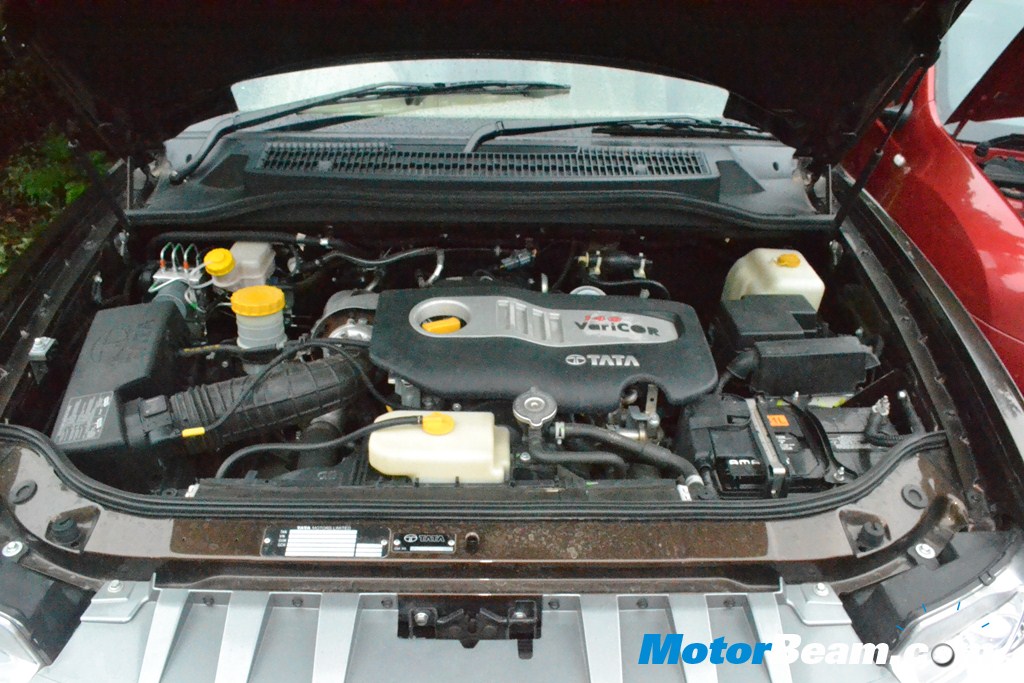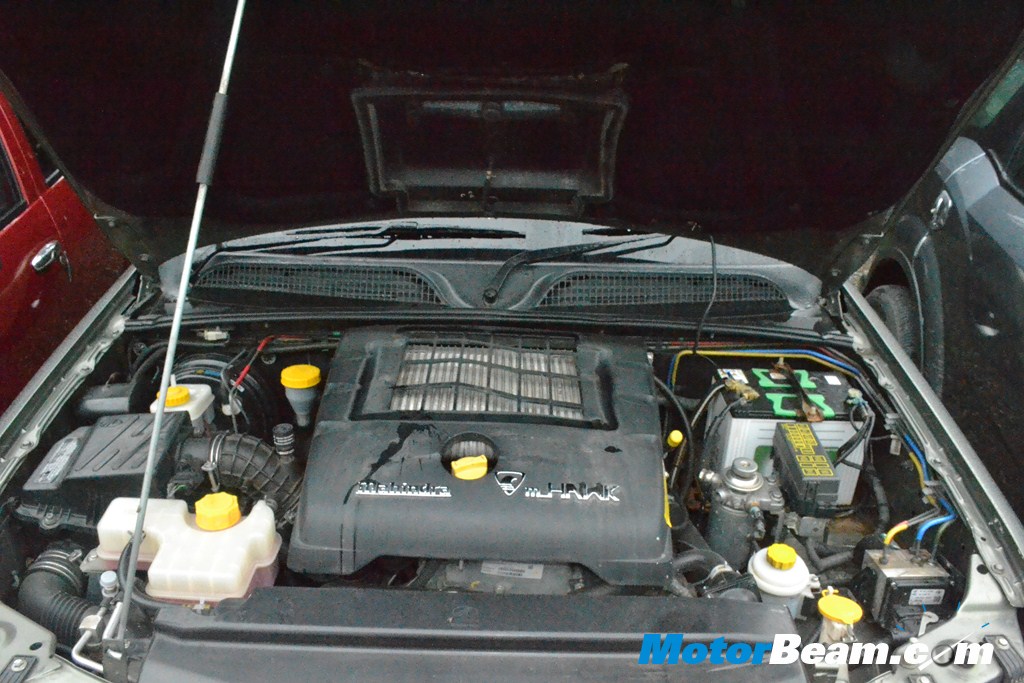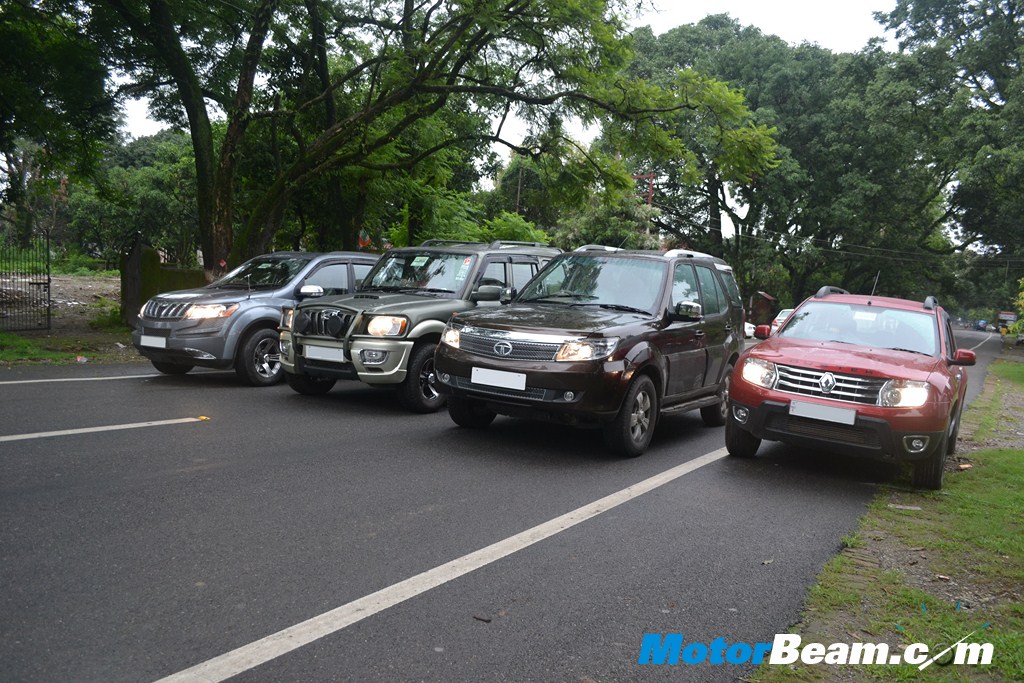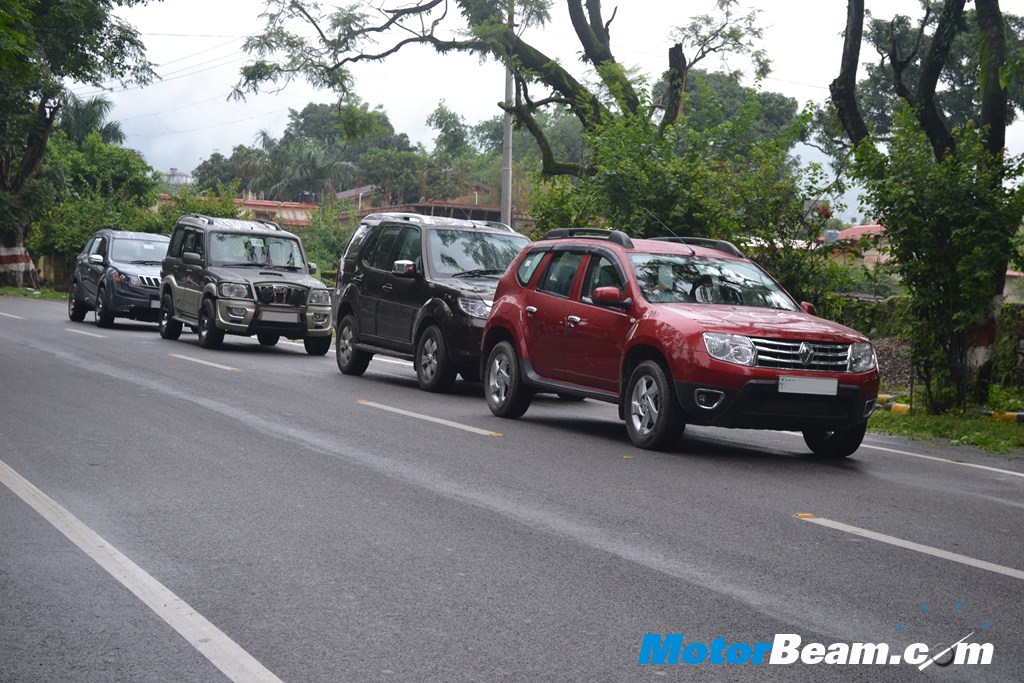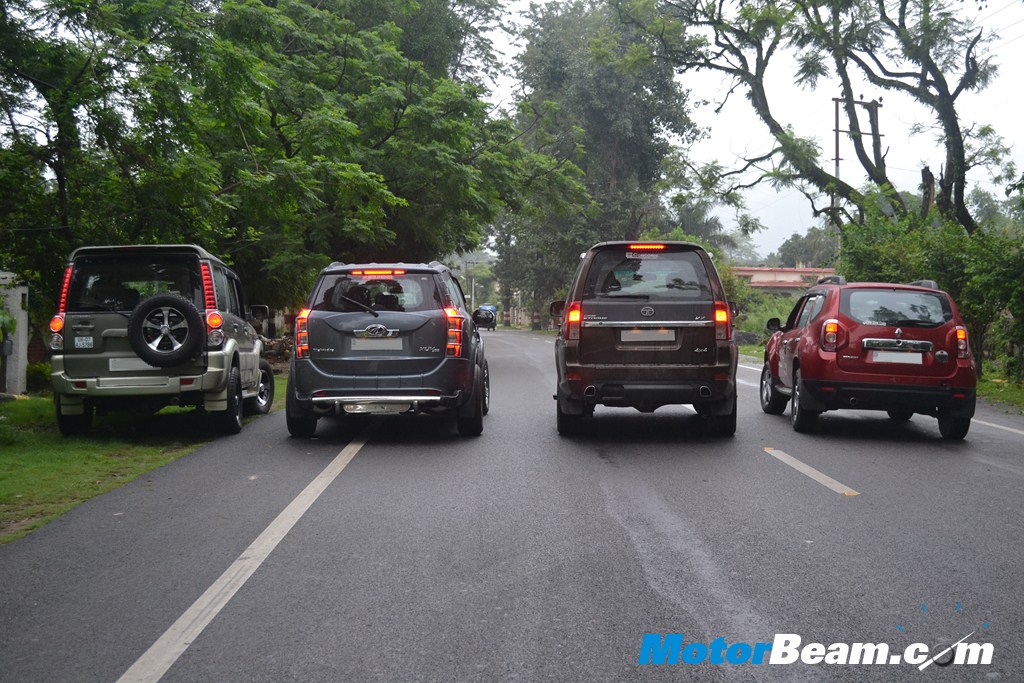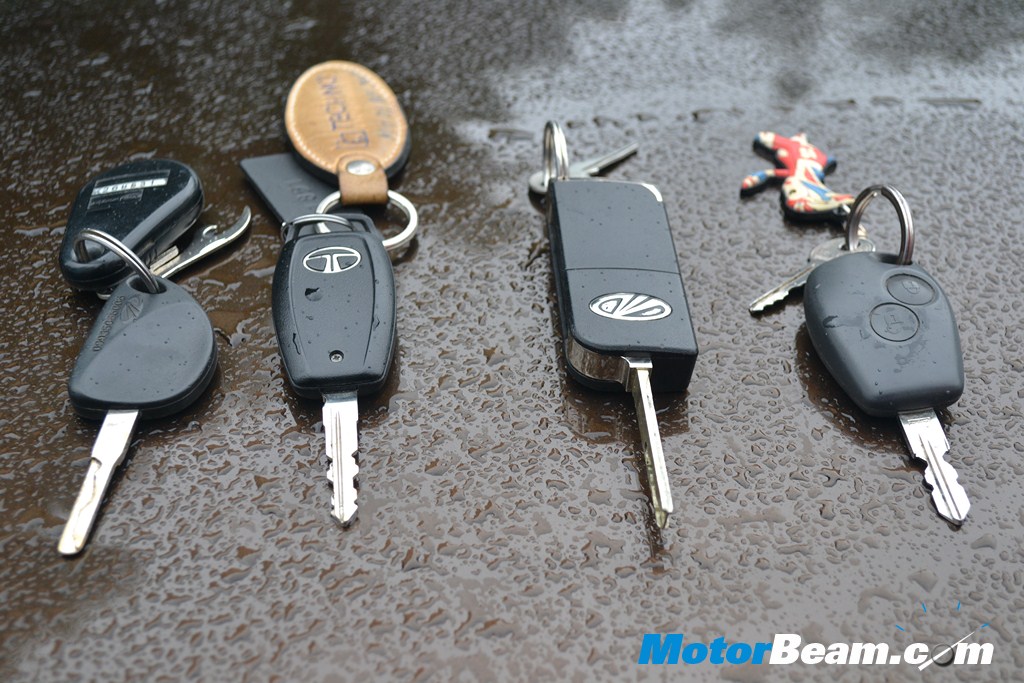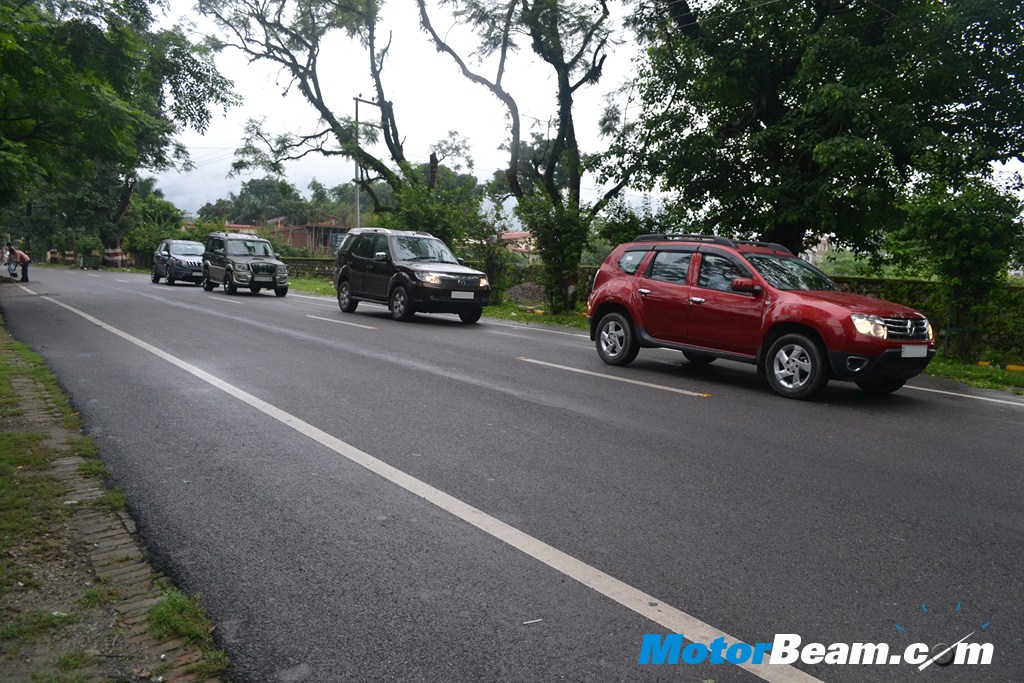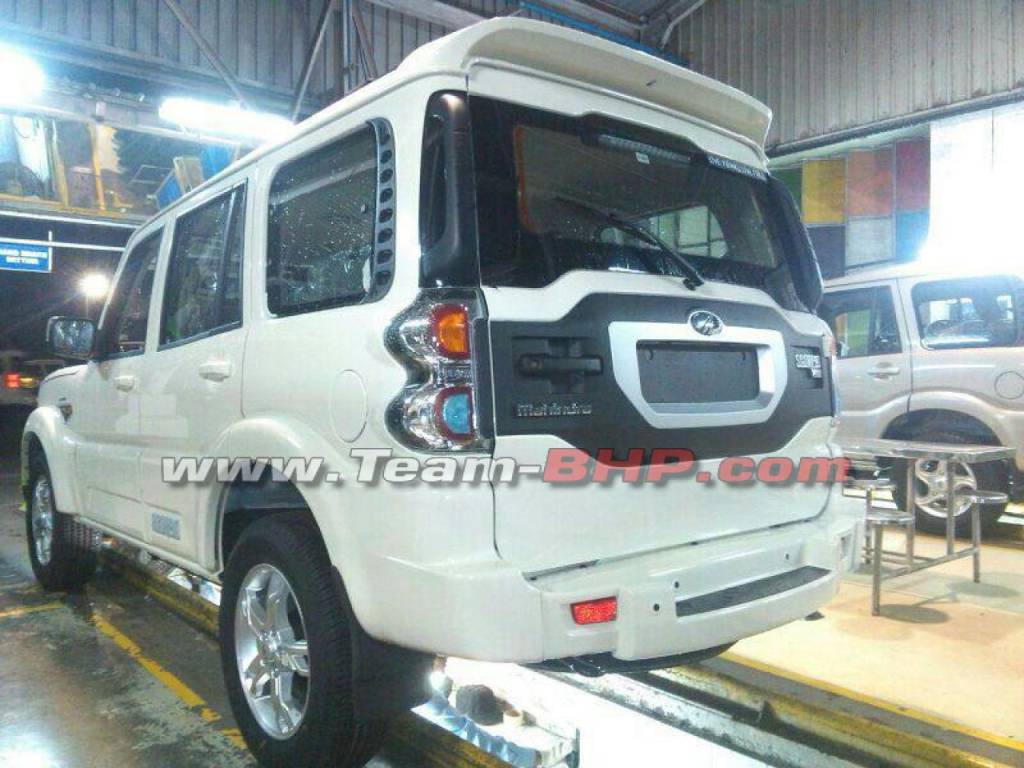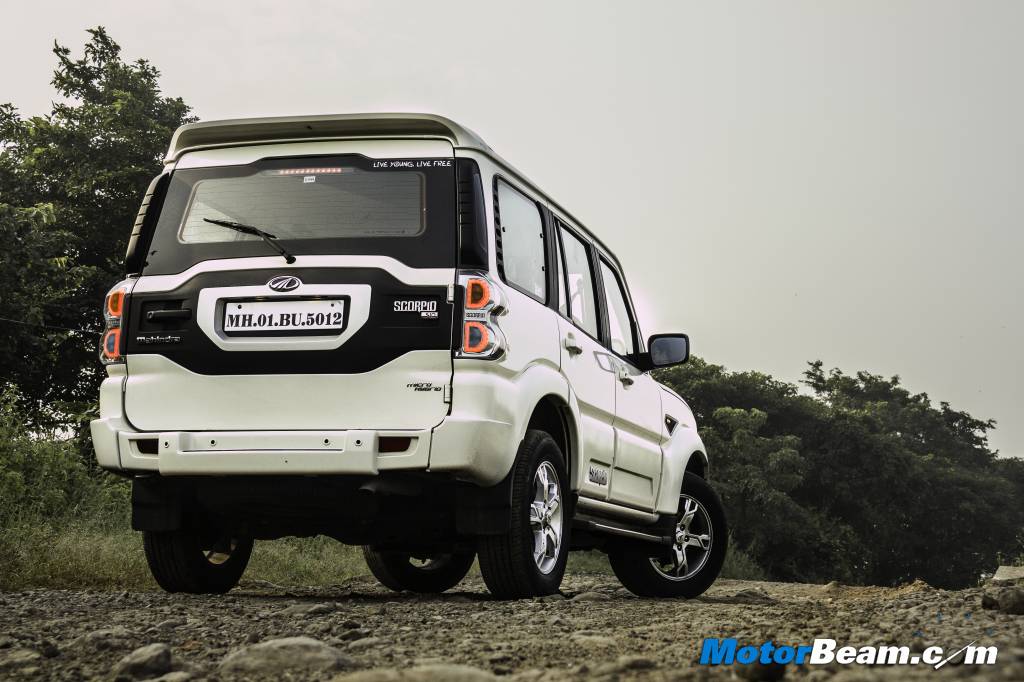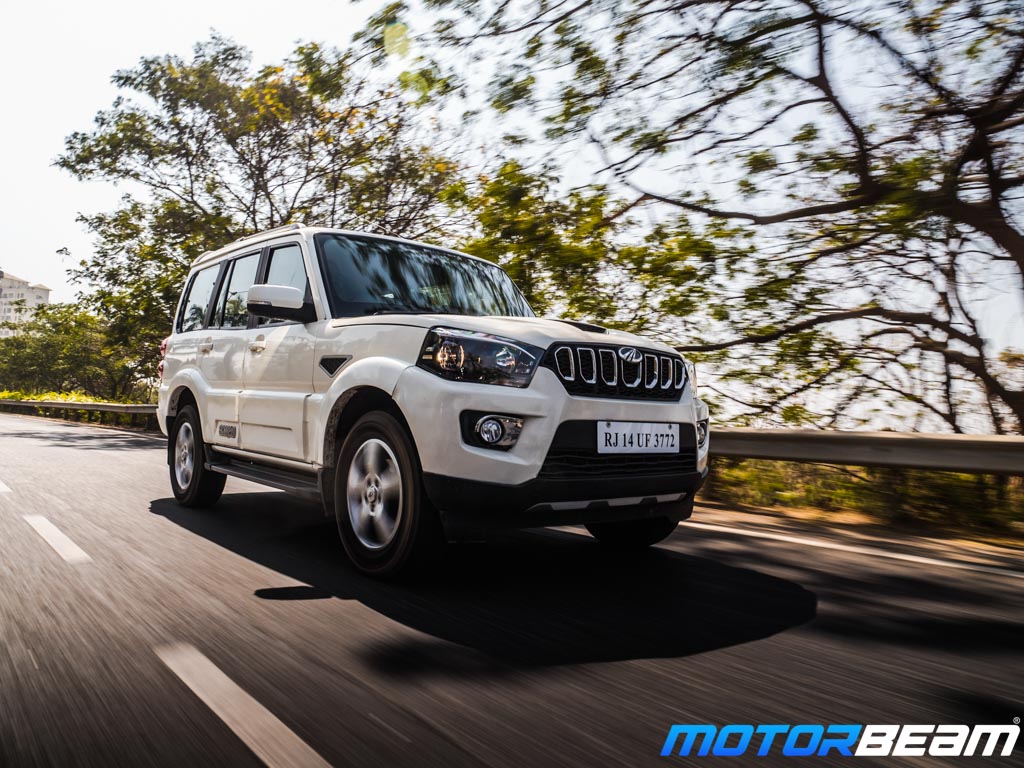All these SUVs offer strong performance but are quite different in driving characteristics.
When someone hears the term ‘SUV’ in India, their ears pop out and they are keen to participate in the discussion as this body type is gaining tremendous popularity in India, especially after the introduction of the Ford EcoSport, a compact yet affordable SUV. But today we are here to discuss about a segment which is a notch higher (more than 4-metres in length) than the EcoSport’s territory and sits lower than the big brute premium SUV segment which consists of the Ssangyong Rexton, Toyota Fortuner, Ford Endeavour and so on. We are talking about a segment which is reachable to a wide audience and capable enough to conquer the crude Indian roads. It’s a mega SUV shootout between the Renault Duster (110 PS), Mahindra XUV500, Tata Safari Storme and Mahindra Scorpio. Let us help you chose the right SUV for you without any further delay.
Styling – “Beauty is in the eye of the beholder” – this idiom stands correct when it comes to the styling of these SUVs. Each one of them boasts a unique stance of its own. The Renault Duster with its tight dimensions is the smallest SUV of the lot but clever styling elements like the double barrel headlamps blended with a large chrome grille and the brawny wheel arches amplify its presence on the road amidst the other SUVs. Tata Motors has played it safe with the exteriors of the Safari Storme, which hasn’t changed much when compared to the predecessor but the Land Rover inspired front fascia and subtle styling elements makes it look tall and handsome. Tailgate mounted spare wheel is sorely missed on the Storme.
The Mahindra Scorpio has an appreciated body style but it looks dated when compared to other SUVs. The Scorpio still brags about its bold characteristics through the chunky design elements, broad stance and dual tone colour scheme (tailgate mounted spare wheel is an aftermarket installment). Then there’s the Cheetah inspired Mahindra XUV500, which exhibits contemporary yet debatable design language, some might like it and some may not. The XUV500 has an aggressive and muscular tone on the exteriors with a well treated roofline and side profile but some details like the front grille and bumpers feel loud and itchy to the eyes.
Interiors – All of these SUVs have an average fit and finish level when it comes to the interiors, though the Renault Duster feels much better screwed together between them all. The Duster uses beige and black colour combination in its cabin, which works well but the interior design looks plain and simple. The Duster is the only one, which doesn’t have a third row seating. Cabin space is comparatively average but it accommodates five adults with good comfort. The Duster has good amount of boot space too, as the spare wheel is mounted underneath. The Tata Safari Storme feels airiest and the most spacious SUV out here. The extensive usage of beige colour, low window line along with a high stance gives you a great sense of space. The uncluttered beige dashboard with neat wood inserts makes it look posh but the stereo system looks like an aftermarket instalment and thus out of place. Tata Motors has improved the quality of interiors drastically but it still has some hard plastic bits. The front and middle row has generous space with good comfort but the third row is best suited for small kids or luggage.
Climb into the Mahindra Scorpio and you are greeted with a commanding view and comfortable seating. The rounded interior styling feels dated and the wood accented centre console on the dashboard appears a bit untidy. Build quality is just average. The power window switches are located oddly between the front seats. The front row has adequate space but the second row feels less spacious for an SUV of this size. The last row of seats is not practical enough for long routes and can be folded away for tremendous amount of boot space. Step inside the XUV500 and you will get a sense of modern styling. The dashboard layout is much better than its rivals, which appears to be rich. The quality is far better than its siblings such as Scorpio and Xylo but there are some tacky bits on the console, which feels flimsy to use. The chunky steering is good to hold and the cabin full of convenient features makes you feel like a boss. The space is at par with the Safari Storme with generous amount of legroom on both front and middle row seats along with good comfort levels. The last row of seats on the XUV500 is the most practical out here but can only be used for short distances. With the third row folded away, there is a good amount of boot space too.
Performance – The Renault Duster we had on our drive is powered by the 1.5-litre k9k diesel engine producing 110 PS of power and 248 Nm of torque. Unlike the 85 PS version, the 110 PS Duster has a considerable amount of turbo lag until 2000 RPM, which is quite annoying in city traffic. Once it passes the 2000 RPM mark, the silky smooth engine pulls nicely till the redline with a strong mid range punch. The engine feels creamy, when on the boil and has enough power to glide on the highways with utter refinement. For quick overtakes, downshifts are needed but thanks to the neat and precise gearbox with short throws, it’s an easy task to do. The 110 PS Duster is mated to a 6-speed manual gearbox, which is a boon on the highways. Average fuel efficiency comes out to be 14 km/l, which is good enough.
The Tata Safari Storme features the same 2.2-litre turbo diesel engine as its predecessor with variable geometry turbocharger, rebadged as VariCOR. It produces 140 BHP of power and 320 Nm of torque. The low end torque delivery is impressive with well controlled turbo lag. You can feel the engine pulling right away from 1400 RPM, which is very drivable both in city as well as on the highways. Refinement has improved considerably but the NVH levels are still not upto the mark. Post 3000 RPM, the engine does get a bit noisy with the turbo whistle penetrating into the cabin. The 5-speed manual gearbox has improved and feels less notchy than before. The gear ratios are cleverly stacked up that leads to good in-gear acceleration and tremendous cruising ability. The 5th gear is tall, which holds up the RPM needle at a relaxed 2100 RPM at 100 km/hr. The Safari Storme returns a decent fuel economy of 10 km/l in the real world.
The Mahindra Scorpio is powered by the 2.2-litre mHAWK diesel engine, which produces 120 BHP of power with 290 Nm of torque. The pulling power of this engine will set you back with a surprise. With minimal turbo lag, the engine pulls cleanly from as low as 1200 RPM until 3500 RPM, post which the motor feels a bit strained and noisy. This engine has got a strong low and mid range with crisp acceleration. Mated to this engine is a 5-speed manual gearbox, which feels clumsy to use. It takes time to get a hang of the notchy tall gearbox. Gear ratios are well spaced out and in gear acceleration is decent too. The Scorpio returns an adequate 10 km/l average fuel economy.
The Mahindra XUV500 carries over the same 2.2-litre mHAWK oil burner from the Scorpio with a higher state of tune, producing 140 BHP of power and 330 Nm of torque. Just like the Scorpio, the XUV500 pulls easily from 1200 RPM with negligible turbo lag. However, the XUV500 has linear acceleration and revs freely up to the redline without losing any breath. The engine becomes audible when you get closer to the redline. The oil burner feels lively throughout the rev band and is better refined than the Scorpio. The XUV500 gets mated to a 6-speed manual gearbox, which is a bit sluggish but takes little time to get used to. The ratios are well put together for both city and highway runs. The sixth gear eases out the engine revs when cruising on highways and enhances fuel economy too. The RPM needle ticks around the 1900 mark in sixth gear at 100 km/hr. The XUV500 returns a solid 12 km/l fuel consumption.
Driving Dynamics – The Duster is sculpted on a monocoque chassis and has the best balance of ride and handling out here. The ride quality is class leading and the way it flattens the bumps and potholes is just phenomenal. You don’t need to slow down on bad roads, as the suspension works really well both at city and highway speeds. It is a bit on the stiffer side but that helps to prevent a bouncy ride. The Duster is a confident handler too, it chucks into corners easily without any body roll and maintains its line after getting out of a corner. The steering feedback is good and precise, which makes you feel that you are driving a sedan. However the steering does transmit vibrations while turning at speeds on bad roads. Stopping power is worth appreciation as the Duster stops from high speeds to a standstill without any drama with almost null nose dive. Brake pedal feel could be better at high speeds. The Duster is also a capable off-roader with impressive approach and departure angles but the front-wheel drive layout makes it a strict soft-roader.
The Tata Safari Storme now gets the Aria’s hydro-formed X2 platform, which is stiffer and weighs less. Despite of shedding some weight, it is still quite heavy at 2095 kgs. The suspension setup on the Storme is new and a bit stiffer but the ride quality is as fantastic as before. The comfort level with this suspension setup is such that you can munch miles all day long without feeling tired. The Safari just glides over undulations and bad tarmac easily at any speed. Though the body roll is much better controlled than before, it still feels top heavy when cornering and you need to slow down a bit for comfortable manoeuvring. Handling has improved and it can turn its face well in time. The hydraulic steering feels slightly heavy at parking speeds and is a bit numb at the centre. High speed stability is good and quick lane changing is comfortable too. It brakes effectively with crisp pedal feedback but there is a considerable nose dive. The Safari Storme is the best off-roader amidst the competition. It has got an advanced ‘shift on fly’ mechanism, which engages 4-wheel drive on the move through a control dial placed near the gearlever. It is also equipped with limited slip differential. Slopes, inclines, mud, slush and articulation humps is no big deal for the Storme with the 200 mm ground clearance adding to the practicality.
The Mahindra Scorpio sits on a ladder frame chassis and weighs the maximum out here at over 2500 kgs, so you can imagine the dynamics of this SUV. It has a soft suspension setup, which is decent at low speeds but gets annoyingly bouncy at high speeds. The Scorpio has an unsettling nature over undulations and is quite a pain on long routes. Chuck it into a corner and you feel the heaviness of the body with noticeable body roll. The body tends to swing when pushed hard on winding roads. Handling is decent and the steering feedback is average. High speed braking is effective with decent pedal bite but the nose dive is unnerving. The 4×4 system on the Scorpio is also a shift on fly mechanism but its not as capable as the Storme because of the lower 180 mm of ground clearance and side steps intruding between, which restricts serious off-roading.
The XUV500 is underpinned by Mahindra’s first monocoque layout with vastly improved dynamics, which has surprised the brand veterans who drive the Scorpio, Bolero or Xylo. The suspension is well tuned and handling is much better than its rivals sitting on ladder frame chassis. At low speeds, the XUV500 feels a bit stiffer than the competition but as the speeds build up, the suspension takes on the undulations proudly without any bounciness. With this suspension setup, long distance touring on the XUV500 is as comfortable as the Safari. Handling for an SUV this size is impressive, as the body roll is well controlled and cornering is sure-footed. The XUV500 maintains its composure to a good extent when you throw it around corners. The Electronic Stability Program (ESP) adds to the confidence inspiring cornering of the XUV500. The steering feedback is adequate and predictable. It’s easy and light at parking speeds but doesn’t weigh up as you would expect at high speeds. The XUV500 is equipped with disc brakes all round and it sheds speed quickly with minimal nose dive but the pedal bite is average, as the pedal has a noticeable amount of play.
Verdict – The mega SUV battle is a close one, as each one of these SUVs has its own merits and it is difficult to choose a clear winner unless we pin point some facts. Starting with the Mahindra Scorpio, it has a competent diesel engine and is one of the easiest SUVs for your pockets, as the price range is at par with the Renault Duster but the styling is quite outmoded when it comes to exteriors and interiors and the dynamics are unpleasant. It therefore finishes last. Coming to the Tata Safari Storme, it has good road presence with a commanding driving position, which puts a smile on your face while gliding on any kind of terrain. The cabin is well spaced out and feels airy. Ride quality is excellent but handling still lacks some confidence. Long-term reliability is unpredictable, same goes to the Mahindra brothers. The range topping model retails at Rs. 14.11 lakhs (ex-showroom, Delhi), which is quite expensive as you get limited list of features when compared to the over equipped XUV500.
The podium finishers of this battle appear to be the Mahindra XUV500 and Renault Duster. If you need good amount of space with comfort, modern styling, powerful engine and feature loaded cabin, the XUV500 makes a lot of sense. However you have to compromise on the interior quality and remember long-term reliability is questionable. If the Safari Storme came loaded with features, it would have given the XUV500 a tough fight for the second spot. If you want to enjoy driving and are usually found behind the wheel, the Renault Duster is the right choice for you with an excellent ride and handling balance. Clever dimensions make it a practical SUV for day to day urban running as well as highways. The only drawbacks are the interior styling, limited list of features and the turbo lag on the 110 PS version. Amongst its competitors, the Renault Duster has a lot going for it, making it the clear winner of this mega SUV shootout.
The Renault Duster offers the best balance of ride and handling, along with reliability you would expect from a vehicle of this price. Not only is it the most frugal SUV here, but also the fastest. All this makes the Duster come out on top in this shootout.
Further Reading –
Renault Duster Review
Mahindra XUV500 Review
Tata Safari Storme Review
Mahindra Scorpio Review
Renault Duster vs Hyundai Creta vs Mahindra XUV500
Renault Duster vs Hyundai Creta vs Mahindra XUV500 – Video


